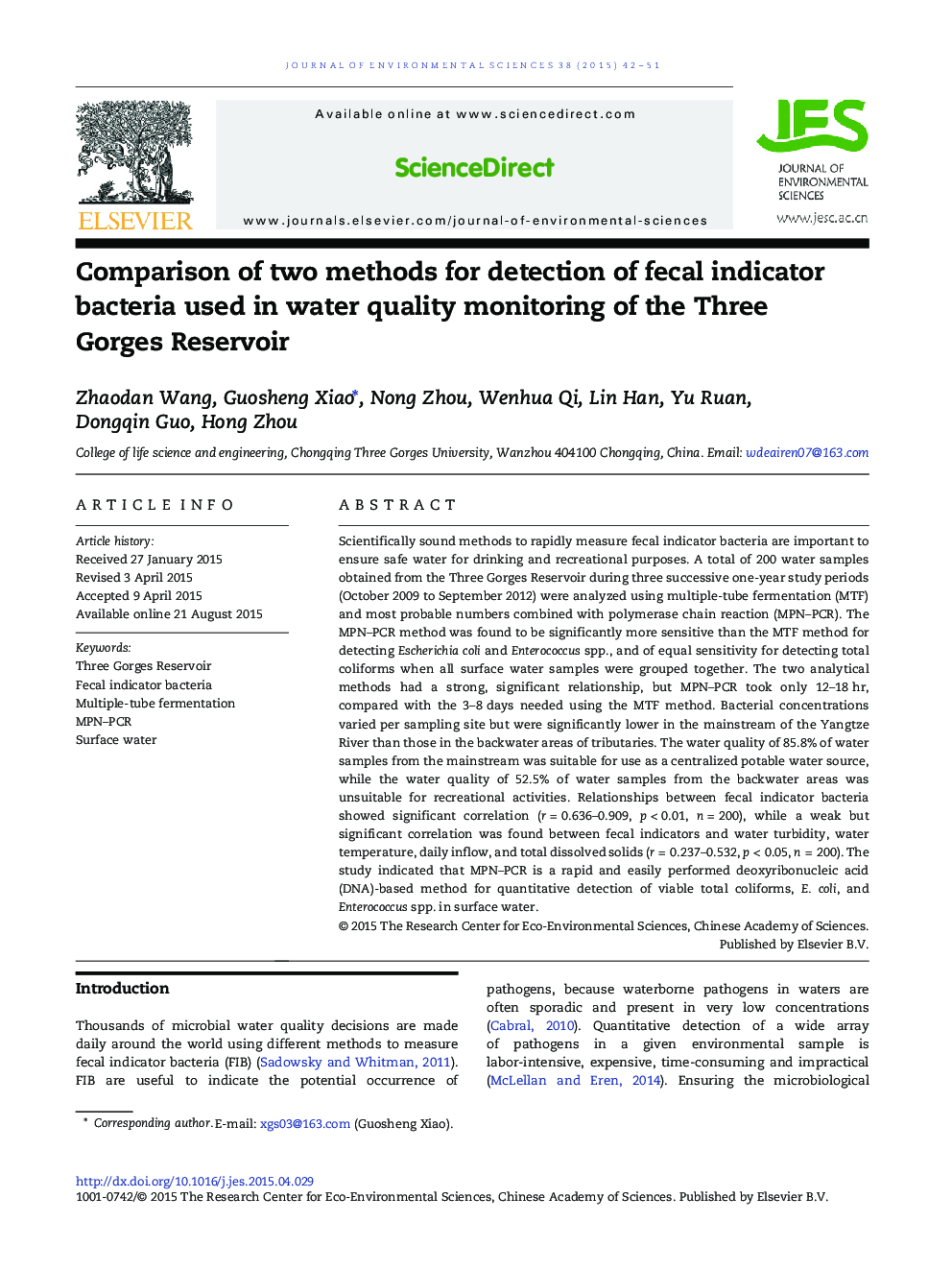| کد مقاله | کد نشریه | سال انتشار | مقاله انگلیسی | نسخه تمام متن |
|---|---|---|---|---|
| 4453848 | 1620815 | 2015 | 10 صفحه PDF | دانلود رایگان |
Scientifically sound methods to rapidly measure fecal indicator bacteria are important to ensure safe water for drinking and recreational purposes. A total of 200 water samples obtained from the Three Gorges Reservoir during three successive one-year study periods (October 2009 to September 2012) were analyzed using multiple-tube fermentation (MTF) and most probable numbers combined with polymerase chain reaction (MPN–PCR). The MPN–PCR method was found to be significantly more sensitive than the MTF method for detecting Escherichia coli and Enterococcus spp., and of equal sensitivity for detecting total coliforms when all surface water samples were grouped together. The two analytical methods had a strong, significant relationship, but MPN–PCR took only 12–18 hr, compared with the 3–8 days needed using the MTF method. Bacterial concentrations varied per sampling site but were significantly lower in the mainstream of the Yangtze River than those in the backwater areas of tributaries. The water quality of 85.8% of water samples from the mainstream was suitable for use as a centralized potable water source, while the water quality of 52.5% of water samples from the backwater areas was unsuitable for recreational activities. Relationships between fecal indicator bacteria showed significant correlation (r = 0.636–0.909, p < 0.01, n = 200), while a weak but significant correlation was found between fecal indicators and water turbidity, water temperature, daily inflow, and total dissolved solids (r = 0.237–0.532, p < 0.05, n = 200). The study indicated that MPN–PCR is a rapid and easily performed deoxyribonucleic acid (DNA)-based method for quantitative detection of viable total coliforms, E. coli, and Enterococcus spp. in surface water.
Figure optionsDownload as PowerPoint slide
Journal: Journal of Environmental Sciences - Volume 38, December 2015, Pages 42–51
